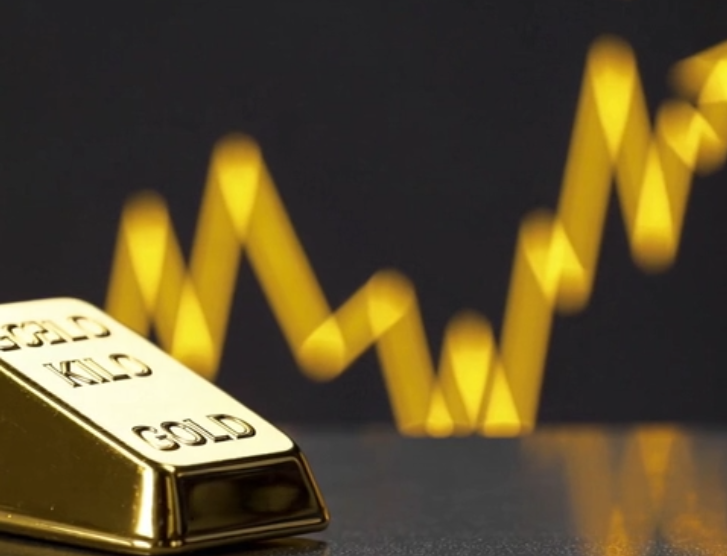Key Highlights
- Bitcoin has outperformed gold as the most productive asset of the 21st century, with a 3,700% increase in value compared to gold’s lackluster performance.
- Gold’s historical significance as a safe haven asset during economic uncertainty in the 1970s has diminished over time, with a total inflation-adjusted return of -4% since 1980.
- Bitcoin’s volatility, while worth noting, has been a double-edged sword, with its price appreciation outweighing the downturns and proving its potential as a long-term investment.
- Bitcoin’s finite supply of 21 million coins and its decentralization and security on a blockchain make it a superior store of value compared to gold, which can be influenced by mining activities and new discoveries.
- Bitcoin offers true financial sovereignty and protection against monetary manipulation, making it the ultimate asset for wealth preservation and growth in today’s digital world.
Introduction
Bitcoin and gold have often been compared as investment assets, with Bitcoin being referred to as digital gold. Both assets have their own unique characteristics and value propositions, but which one is smarter to invest in? In this article, we will compare the key highlights, historical significance, investment portfolios, market impact, key factors influencing price and value, investment strategies, and the future outlook for both gold and Bitcoin.
Bitcoin, the world’s first cryptocurrency, has made a historic run since its launch 15 years ago. It has become the most productive asset of the 21st century, outperforming traditional investments like stocks and bonds. On the other hand, gold has a long-standing history as a store of value and safe haven asset, particularly during economic uncertainty.
However, the narrative of gold as a store of value has lost its shine in recent years. While gold had a remarkable performance in the 1970s, its total inflation-adjusted return since 1980 has been underwhelming, failing to keep pace with inflation. Meanwhile, Bitcoin has experienced exponential growth, with an inflation-adjusted return of over 3,700% in the past decade alone.
In this article, we will delve into the value propositions of both assets, their historical significance, their roles in investment portfolios, the market impact of Bitcoin compared to gold, the key factors influencing their price and value, and the investment strategies and future outlook for both assets.
Understanding the Value Proposition of Gold
Gold has been recognized as a precious metal for centuries, valued for its beauty and scarcity. In addition to its aesthetic appeal, gold has also served as a store of value and a hedge against inflation. Central banks and individuals have long considered gold to be a reliable asset during times of economic uncertainty. Its limited supply and physical nature make it a tangible asset that can be held, traded, and used as a medium of exchange. Gold’s value proposition lies in its historical significance as a safe haven asset and its ability to retain its worth over time.
Historical Significance and Stability
Gold’s historical significance as a store of value and a safe haven asset dates back centuries. It has been used as a form of currency and a medium of exchange throughout different civilizations. In the modern era, gold gained prominence during the turbulent economy of the 1970s, when double-digit percentage inflation eroded the value of the dollar. During this time, gold’s price skyrocketed, rising from under $300 an ounce to nearly $2,600, an impressive 700% increase. This performance solidified gold’s reputation as a reliable asset for preserving wealth and combating inflation.
However, the narrative of gold as a safe haven asset has lost its luster in recent years. Despite its historical significance, gold has failed to keep pace with inflation since the 1970s. From 1980 to the end of 2023, gold’s total inflation-adjusted return is an underwhelming -4%. This lackluster performance raises questions about gold’s effectiveness as an inflation hedge and a store of value in the modern investment landscape.
Gold’s Role in Modern Investment Portfolios
Gold has traditionally been included in investment portfolios as a means of diversification and as a hedge against market volatility. Investors have turned to gold during times of economic uncertainty and market downturns, considering it a safe haven asset that can provide stability and preserve wealth. Gold ETFs (exchange-traded funds) have made it easier for investors to gain exposure to gold without physically owning the metal. These ETFs track the price of gold and provide investors with a way to invest in gold through the stock market.
However, the role of gold in modern investment portfolios has become a subject of debate. Some argue that the rise of digital assets like Bitcoin has diminished the appeal of gold as a diversification tool. Others believe that gold still has a place in investment portfolios, particularly as a hedge against inflation and a store of value. The decision to include gold in an investment portfolio ultimately depends on an investor’s risk tolerance and long-term investment goals.
Introducing Bitcoin: The Digital Contender
Bitcoin, often referred to as digital gold, is a decentralized digital currency that operates on a technology called blockchain. It was created in 2009 as an alternative to traditional fiat currencies and has gained significant attention and adoption in recent years. Bitcoin’s value proposition lies in its digital nature, its finite supply, and its potential to serve as a store of value and medium of exchange in the digital age. It offers users the ability to transact securely and privately without the need for intermediaries like banks.
The Rise of Cryptocurrency
In recent years, cryptocurrencies, led by Bitcoin, have experienced a rapid rise in popularity and market capitalization. Bitcoin’s market cap has grown exponentially, making it one of the most valuable digital assets in existence. This surge in interest can be attributed to several factors, including increased awareness and understanding of cryptocurrencies, advancements in technology, and a growing acceptance of digital currencies in various industries.
However, it is important to note that the cryptocurrency market is highly speculative and volatile. The price of Bitcoin, in particular, has experienced significant fluctuations, leading some to question its suitability as a long-term investment. Nevertheless, institutional investors and financial institutions have started to show interest in Bitcoin, further legitimizing its role in the financial landscape.
Bitcoin’s Market Impact Compared to Gold
Bitcoin’s rise to prominence has had an undeniable impact on the market. As the first and most well-known cryptocurrency, Bitcoin has captured the attention of investors, the media, and financial institutions. Its price volatility has made headlines and attracted both speculators and long-term investors.
While gold remains the more established asset, Bitcoin’s market impact cannot be ignored. The increasing adoption of Bitcoin by institutional investors and the growing acceptance of cryptocurrencies as a legitimate investment class have contributed to its rising market capitalization. The price of gold has also been influenced by market factors, such as changes in interest rates and economic uncertainty. However, Bitcoin’s market volatility and its potential for high returns have made it an attractive investment option for those willing to take on the risk.
Key Factors Influencing Price and Value
Several factors influence the price and value of both gold and Bitcoin. These factors include supply and demand dynamics, external economic factors , and the relative strength of fiat currencies. Understanding these key factors can provide insights into the future performance of gold and Bitcoin and help investors make informed decisions.
Market Volatility and Liquidity Comparisons
Both gold and Bitcoin exhibit significant volatility in their respective markets. While this volatility can present investment opportunities, it also carries risks. The liquidity of an asset is its ability to be bought or sold quickly without significantly impacting its price. Liquidity is an important consideration for investors, as it determines the ease with which they can enter or exit a position.
Text Table:
Factor | Gold | Bitcoin |
Volatility | Gold exhibits relatively low volatility compared to Bitcoin. | Bitcoin is known for its high volatility, with significant price swings. |
Liquidity | Gold is highly liquid and can be easily bought or sold. | Bitcoin’s liquidity has improved over time, but it can still be volatile. |
In terms of market volatility, gold tends to be more stable compared to Bitcoin. However, Bitcoin’s volatility can also be seen as an opportunity for investors looking for higher returns. Additionally, the liquidity of gold and Bitcoin should be considered, as it affects the ease of buying and selling these assets.
Supply, Demand, and External Factors
The supply and demand dynamics of gold and Bitcoin play a crucial role in determining their price and value. Both assets have limited supply, but the factors influencing their supply and demand differ.
For gold, the supply is influenced by mining activities and new discoveries. The amount of gold available in the market can fluctuate based on these factors. In contrast, Bitcoin has a set limit of 21 million coins, and no single entity can change this limit. This finite supply adds to Bitcoin’s value proposition as a store of value.
External economic factors, such as changes in interest rates, inflation, and geopolitical events, also impact the price of both gold and Bitcoin. These factors can create demand for safe haven assets like gold and increase the interest in cryptocurrencies like Bitcoin.
Investment Strategies: Gold vs. Bitcoin
Choosing between gold and Bitcoin as an investment requires considering various factors, including risk tolerance, investment goals, and the ability to withstand volatility. Both assets offer unique investment opportunities and potential for growth.
Diversification and Risk Management
Diversification is an essential aspect of any investment strategy. Including different asset classes, such as gold and Bitcoin, can help mitigate risk and protect against market volatility. Gold has a long-standing reputation as a safe haven asset, providing stability during economic downturns. Bitcoin, on the other hand, offers the potential for high returns but also carries higher volatility.
Investors should assess their risk tolerance and investment objectives when considering gold or Bitcoin as part of their portfolio. Seeking professional investment advice can also help individuals make informed decisions about diversification and risk management.
Long-term Growth Prospects
Both gold and Bitcoin have the potential for long-term growth, but their growth prospects differ based on their characteristics and market dynamics. Gold has a track record of maintaining its value over time and has been considered a reliable store of value for centuries. Bitcoin, as a relatively new asset, has shown remarkable growth and has gained significant attention from investors and financial institutions.
Investors looking for long-term growth should consider their risk tolerance and investment goals when deciding between gold and Bitcoin. Gold offers stability and a proven track record, while Bitcoin provides the potential for higher returns but with increased volatility.
The Future Outlook for Gold and Bitcoin
The future outlook for both gold and Bitcoin is influenced by various factors, including technological advancements, economic and regulatory influences, and adoption rates. These factors can shape the market dynamics and the perceived value of each asset.
Technological Advancements and Adoption Rates
Technological advancements play a significant role in the future outlook of both gold and Bitcoin. While gold’s value proposition lies in its physical properties and long-standing history, Bitcoin’s value is derived from its digital nature and the potential for innovation in the blockchain technology that underpins it. The adoption rates of both assets also influence their future outlook, with Bitcoin experiencing widespread adoption in recent years and gold’s role as a store of value evolving with changing investor preferences.
Economic and Regulatory Influences
Economic and regulatory influences can impact the future prospects of both gold and Bitcoin. Changes in central bank policies, executive orders, and economic uncertainties can affect the perceived value of these assets. Additionally, regulatory frameworks and government interventions can shape the adoption and acceptance of cryptocurrencies like Bitcoin.
Conclusion
In conclusion, the comparison between gold and Bitcoin boils down to understanding their value propositions, market impacts, investment strategies, and future outlooks. While gold boasts historical stability and a role in traditional portfolios, Bitcoin represents a digital contender with rising popularity and unique technological advancements. Investors must weigh the factors of market volatility, supply-demand dynamics, and regulatory influences when deciding between the two assets. Diversification, risk management, long-term growth prospects, and environmental implications also play crucial roles in determining the smarter investment choice between gold and Bitcoin. Making an informed decision that aligns with your financial goals and risk tolerance is key in this investment debate.
Frequently Asked Questions
How do gold and Bitcoin compare as safe-haven assets?
Both gold and Bitcoin are considered safe haven assets and can provide a store of value during economic uncertainty. The choice between them depends on an investor’s risk tolerance and their views on the future of digital assets.
Can Bitcoin replicate the historical reliability of gold?
While Bitcoin has outperformed gold in recent years, it is still a relatively new asset compared to gold’s long-standing history. The narrative of gold as a reliable store of value rem ains strong, but Bitcoin’s potential for growth should not be overlooked.
What are the tax implications of investing in gold versus Bitcoin?
Investing in gold and Bitcoin may have different tax implications. It is important to consult with a tax professional to understand the tax rules and regulations specific to your jurisdiction.
How does the environmental impact of mining gold compare to Bitcoin mining?
Gold mining has a significant environmental impact, including deforestation and water pollution. Bitcoin mining also has an environmental footprint due to the energy consumption required. The comparison between the two depends on various factors, including the source of energy used in Bitcoin mining.
Is it better to invest in gold or Bitcoin for a short-term gain?
Both gold and Bitcoin can be volatile in the short term. The choice between the two depends on an investor’s risk tolerance and their understanding of the market dynamics of each asset.
What should investors consider when choosing between gold and Bitcoin?
When choosing between gold and Bitcoin, investors should consider their risk tolerance, investment goals, time horizon, and understanding of the market dynamics of each asset. Seeking professional investment advice can also help in making an informed decision.






